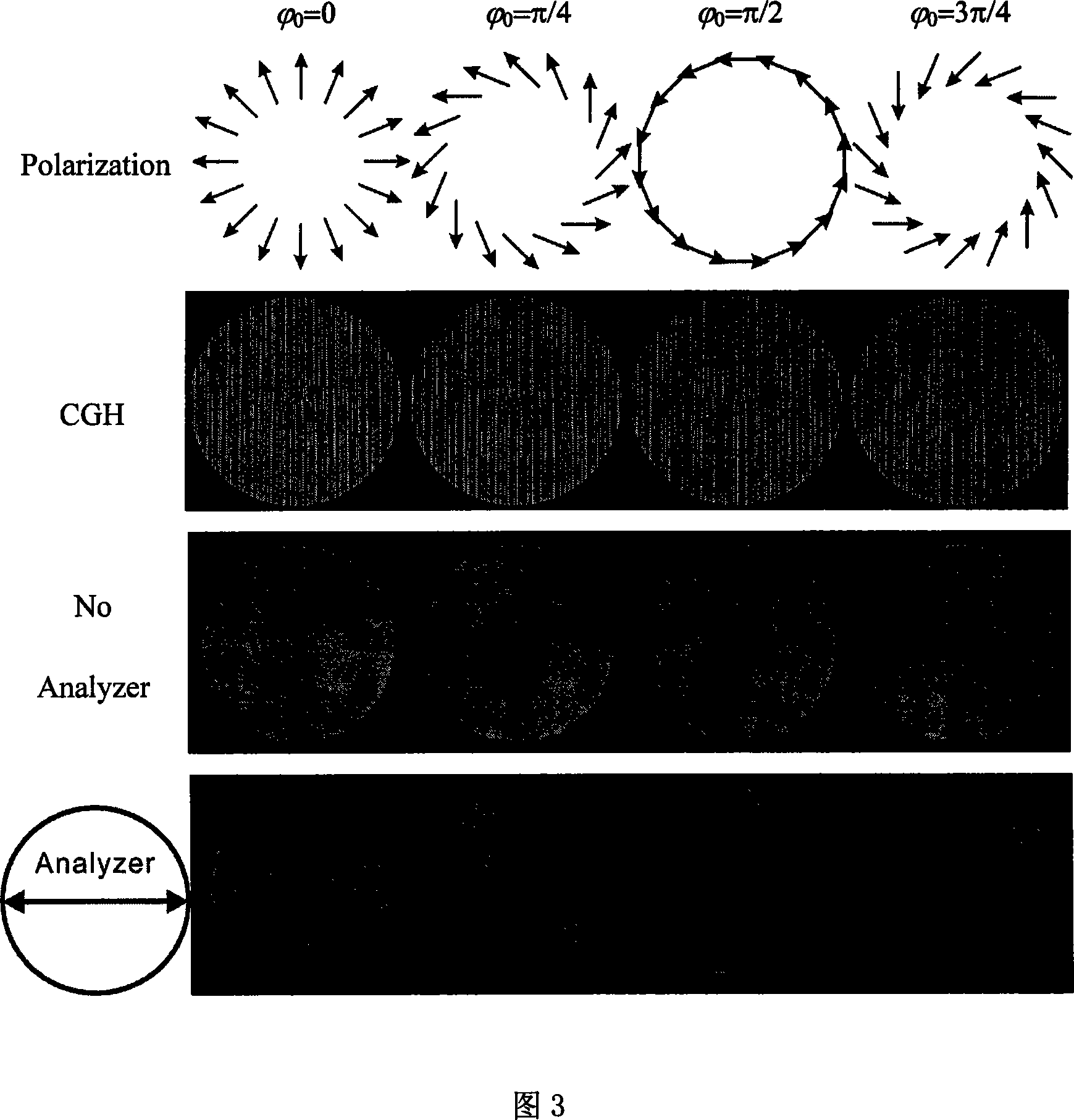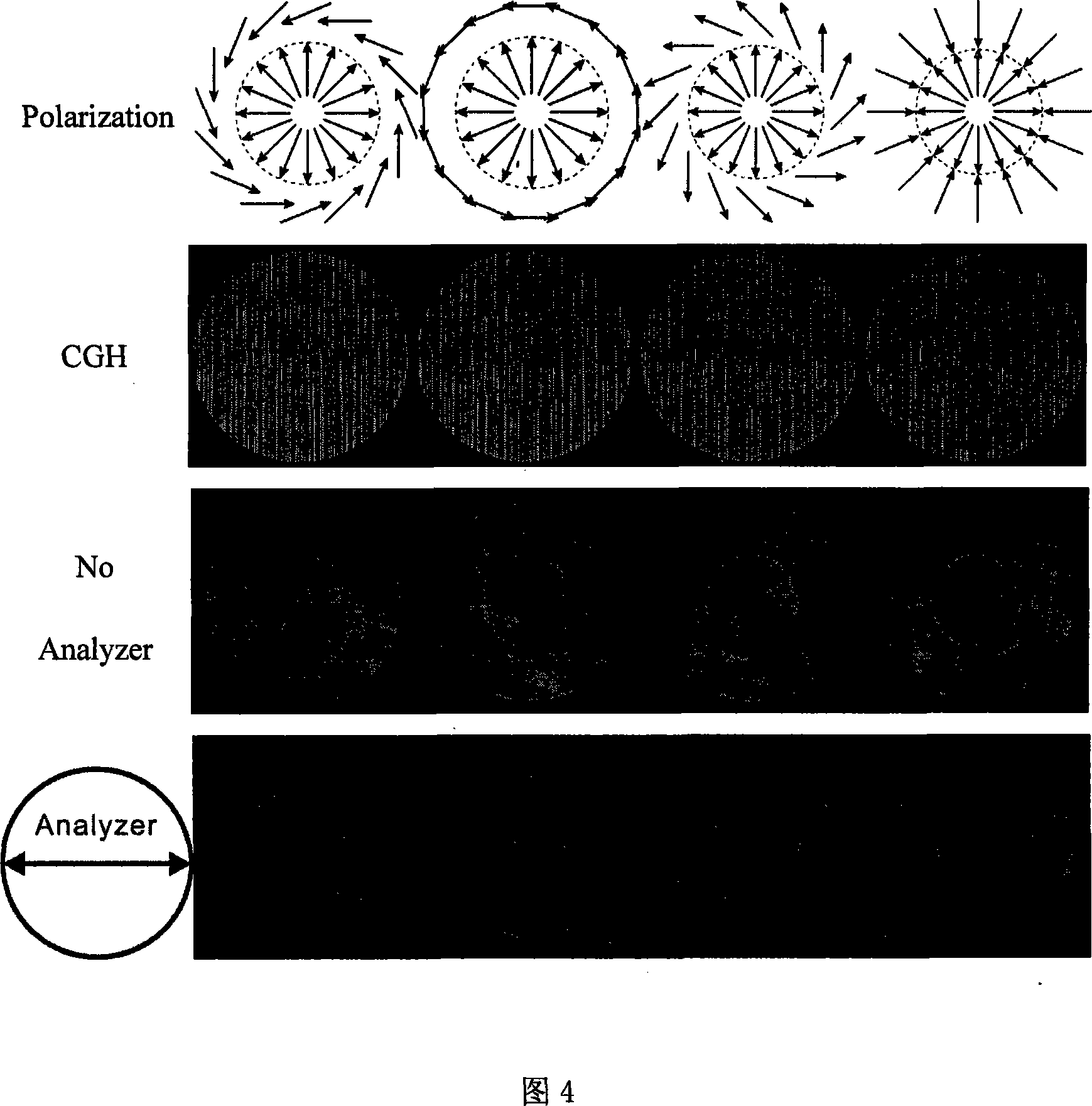Generation device of random polarization distributing vector light beam
A technology for generating devices and vectors, which is applied in optics, optical components, nonlinear optics, etc., can solve the problem of not being able to generate multiple arbitrary polarization distribution vector beams at the same time, achieve the effect of reducing the impact of beam quality and broad application prospects
- Summary
- Abstract
- Description
- Claims
- Application Information
AI Technical Summary
Problems solved by technology
Method used
Image
Examples
Embodiment 1
[0022] As shown in Figure 1, the core of the generating device of the arbitrary polarization distribution vector light beam according to the present invention is that a spatial light modulator 2, a first lens 3, a Filter 4, two quarter-wave plates 5, second lens 6 and phase-type Ronchi grating 7; spatial light modulator 2 is located at the front focal plane of first lens 3, and the rear focal plane of first lens 3 is set Filter 4; filter 4 is located at the front focal plane of the second lens 6 at the same time; phase-type Ronchi grating 7 is located at the back focal plane of the second lens 6; two quarter-wave plates 5 are close to the backlight of the filter 4 Set aside. As shown in Figure 2, the complete optimal technical scheme of the generating device of the arbitrary polarization distribution vector beam of the present invention is as follows: the laser we use is the green laser 8 with a wavelength of 532 nanometers of Coherent Company, and the spatial light modulator ...
Embodiment 2
[0026] The 4f optical system is built according to the principle in Figure 1, and the specific experimental system constructed on this basis is shown in Figure 2. Project the computational hologram (CGH) shown in the second column in Figure 3 onto the spatial light modulator, and the cylindrical symmetry vector corresponding to the polarization distribution shown in the first column in Figure 3 can be obtained at the CCD in Figure 2 beam. The beam intensities without linear polarizer 2 and with linear polarizer 2 inserted in front of the CCD are shown in columns 3 and 4 in Figure 3, and the dark spot in the center of the beam is caused by the singularity of the polarization state distribution uncertainty. When the linear polarizer 2 used as a polarizer is inserted in front of the CCD, an extinction direction will appear in the beam intensity distribution, and the extinction direction corresponds to π / 2- 0 . In the four experimental results, the extinction direction is in th...
Embodiment 3
[0028] The 4f optical system is built according to the principle in Figure 1, and the specific experimental system constructed on this basis is shown in Figure 2. By projecting the computational hologram shown in the second column of Fig. 4 on the spatial light modulator, the vector beam corresponding to the polarization distribution shown in the first column of Fig. 4 can be obtained at the CCD in Fig. 2 . The difference in the polarization state between the inner and outer modes leads to the appearance of a dark band at the boundary in the field intensity distribution, and the dark band gradually becomes clear with the increase of the polarization state difference between the inner and outer modes. Xiangshida's dark band is the clearest. Similar to Example 1, there is also the central singularity and the extinction direction after adding a linear polarizer. Here, the generation of m=1 dual-mode vector beams is realized by using our 4f system. Meaning of the symbols in Figu...
PUM
 Login to View More
Login to View More Abstract
Description
Claims
Application Information
 Login to View More
Login to View More - R&D
- Intellectual Property
- Life Sciences
- Materials
- Tech Scout
- Unparalleled Data Quality
- Higher Quality Content
- 60% Fewer Hallucinations
Browse by: Latest US Patents, China's latest patents, Technical Efficacy Thesaurus, Application Domain, Technology Topic, Popular Technical Reports.
© 2025 PatSnap. All rights reserved.Legal|Privacy policy|Modern Slavery Act Transparency Statement|Sitemap|About US| Contact US: help@patsnap.com



